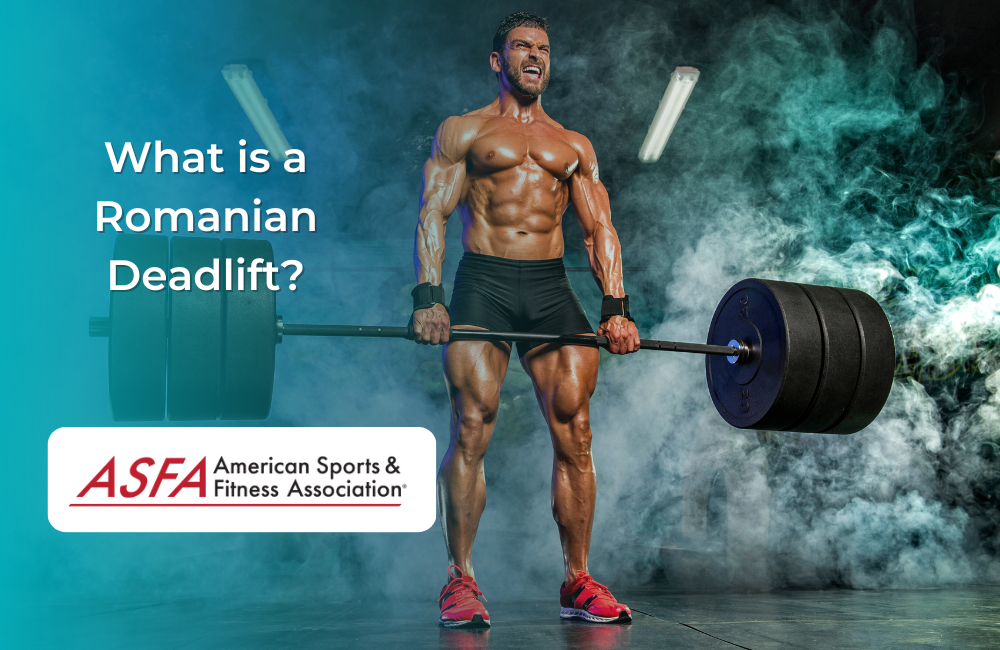A Romanian deadlift is a great way to build strength in your lower back and hamstrings. It's also a challenging exercise that can help improve your posture and overall fitness level.
What is a Romanian deadlift (RDL)
The Romanian deadlift is a variation of the conventional deadlift, and it's an isolation exercise that targets your glutes. The primary difference between a Romanian deadlift and a conventional deadlift is that in an RDL, you keep your torso almost perfectly upright as you lift the weight off of the floor. This allows you to use less weight than if you were performing a regular squat or bent-over row--but it also places greater emphasis on working out those glutes!
How to do a Romanian deadlift
To do a Romanian deadlift:
- Start with the barbell on the floor and your feet hip-width apart.
- Pull the barbell up to your knees, keeping your back flat and upper body straight (don't lean forward). Don't bend at the waist! This is an important part of doing this exercise correctly, as it helps keep your spine safe from injury while also making sure that you are using proper form when lifting weights up off of their supports (like if you were picking something up off of a table).
- Lower back down slowly until there is about an inch or two between your thighs and calves/shin area. You should feel the tension in these muscles as well as some soreness after doing this many times over several workouts; this means they're being worked!
Benefits of Romanian deadlifts
The Romanian deadlift is a great exercise to strengthen your lower back, hamstrings, and glutes. It also strengthens your grip because you need to hold onto the barbell as you perform this movement. The Romanian deadlift works the hamstrings, glutes, and quadriceps muscles in the legs while strengthening the lower back and core muscles at the same time.
The benefits of doing Romanian deadlifts include improved posture due to increased flexibility through stretching out those tight muscles in your lower body, increased strength in both legs, improved balance on one leg as well as overall stability throughout all parts of your body (especially if done correctly); better circulation for better oxygenation which can help prevent injuries such as knee pain from happening again!
Variations of Romanian deadlifts
The Romanian deadlift has several variations, each with its own benefits.
- Single-leg Romanian deadlift (SLRDL): This is a great exercise for building balance and core strength. It's also easier on your back than traditional RDLs because you only lift one side at a time instead of both sides simultaneously.
- Double leg Romanian deadlift (DLLR): This variation works your hamstrings and glutes, but it may be too much stress on the lower back if done incorrectly or with too much weight in hand. If fatigue sets in during this movement, consider switching to an alternate version before attempting another rep at all costs!
- Overhead RDL: This move will help improve shoulder mobility while strengthening the core muscles associated with holding up heavy weights overhead without sacrificing form or stability--two things that are crucial when doing any overhead movements like bench presses or pushups!
Takeaway:
The Romanian deadlift is a great exercise to add to your workout routine. It works the lower back, hamstrings, and glutes while building strength in the legs. To perform this move correctly, you'll want to stand with feet hip-width apart and knees slightly bent. Lift one foot up behind you while keeping your back straight, then lower down slowly until you feel a stretch in your hamstrings. You can also use weights or resistance bands if desired!
Conclusion
Romanian deadlifts are a great exercise for building strength and muscle in the posterior chain. They can be performed in many different variations, so you can choose one that best suits your needs. If you're looking to add some new exercises to your routine, then try out this Romanian deadlift variation!





